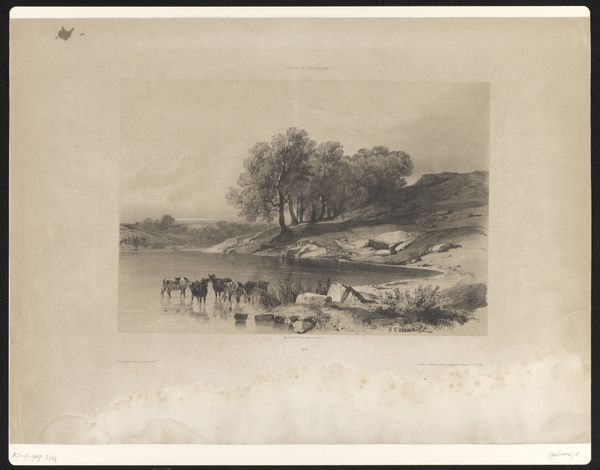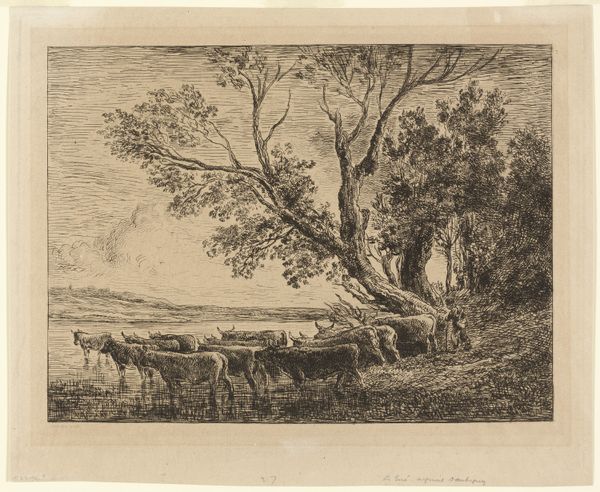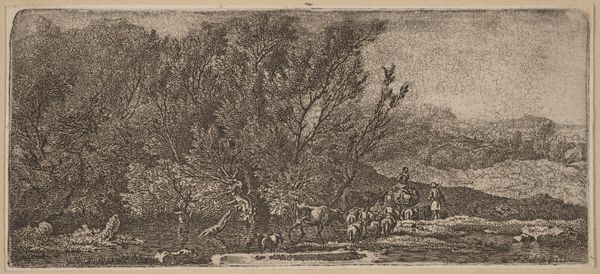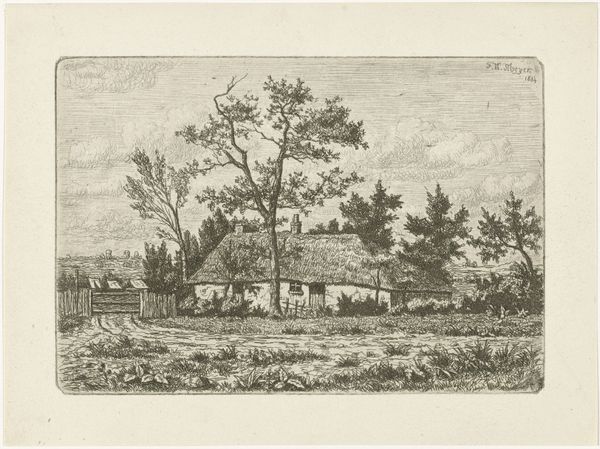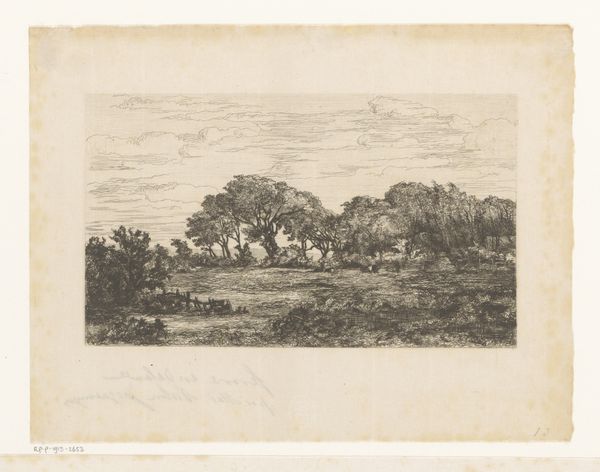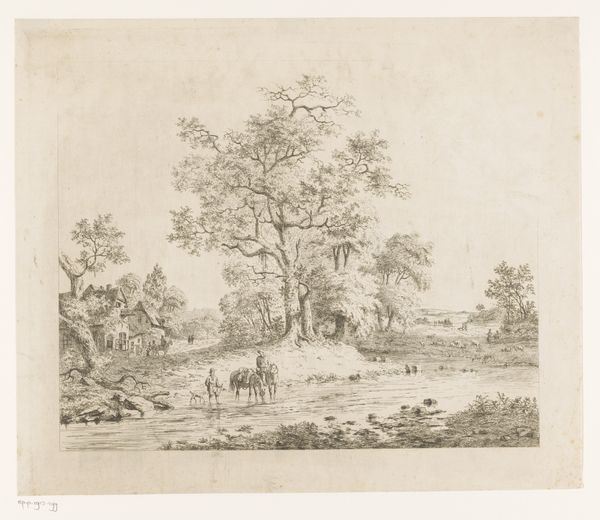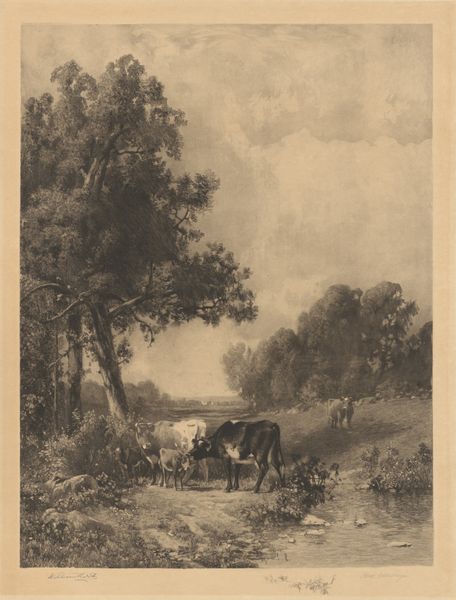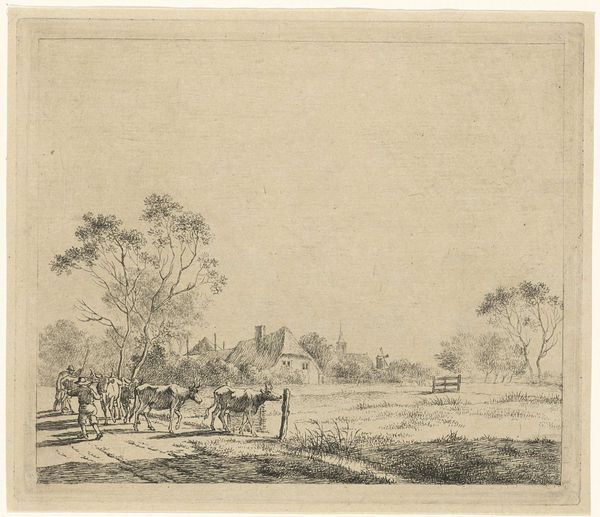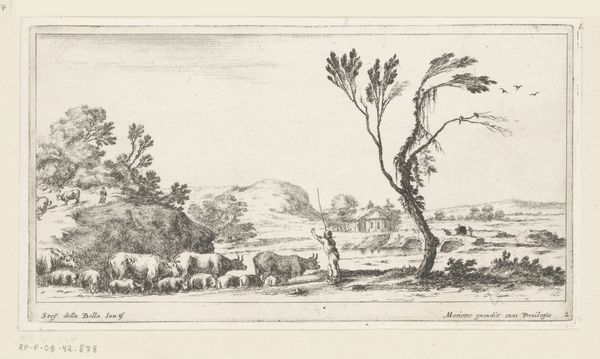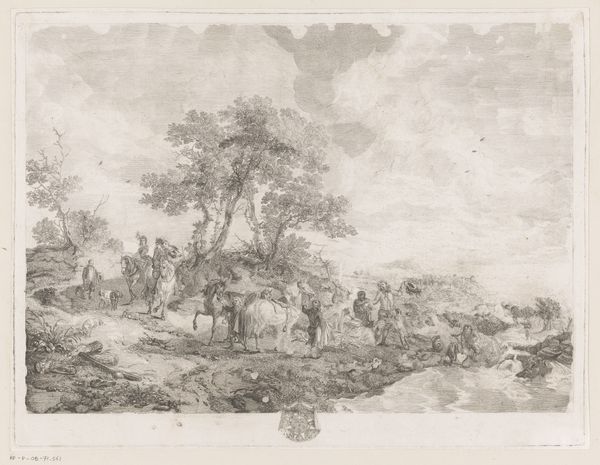
Dimensions: height 257 mm, width 377 mm
Copyright: Rijks Museum: Open Domain
Editor: This etching by Willem de Zwart, called "Cows by a Farmhouse," from 1924, is incredibly detailed, considering it's just in shades of brown. I'm struck by the overall tranquility, a peaceful countryside scene. What do you see in this print? Curator: The stillness you perceive speaks volumes. Etchings like these captured a longing for a simpler agrarian past during a period of rapid industrialization. Notice the cows themselves, archetypal symbols of nurturing and abundance in art history. Editor: So the cows aren't just cows; they represent something deeper? Curator: Indeed! Think of the endless artistic and cultural associations with cattle throughout history—fertility goddesses, pastoral landscapes, the very image of nourishment. Consider how de Zwart subtly elevates the mundane to something spiritually resonant. The farmhouse almost recedes, deferring to nature and its bounty. Editor: It's interesting how the scene could be seen as a criticism of industrial life. Are the trees and the farmhouse also symbolic in some way? Curator: The trees offer shelter, continuity, rootedness. The farmhouse provides for humanity in reciprocity with the animals and nature. Do you sense how de Zwart evokes a cultural memory? How, by depicting a very specific place and time, he is touching on something timeless? Editor: I do see that. This artwork transports me into a calm reflection that might be missing in a city. I hadn't really thought about landscape art as something communicating values in that way. Thanks! Curator: It’s rewarding to see how artistic skills captured not only moments of landscape, but how they encapsulate meaning, connecting us across time through potent images.
Comments
No comments
Be the first to comment and join the conversation on the ultimate creative platform.
